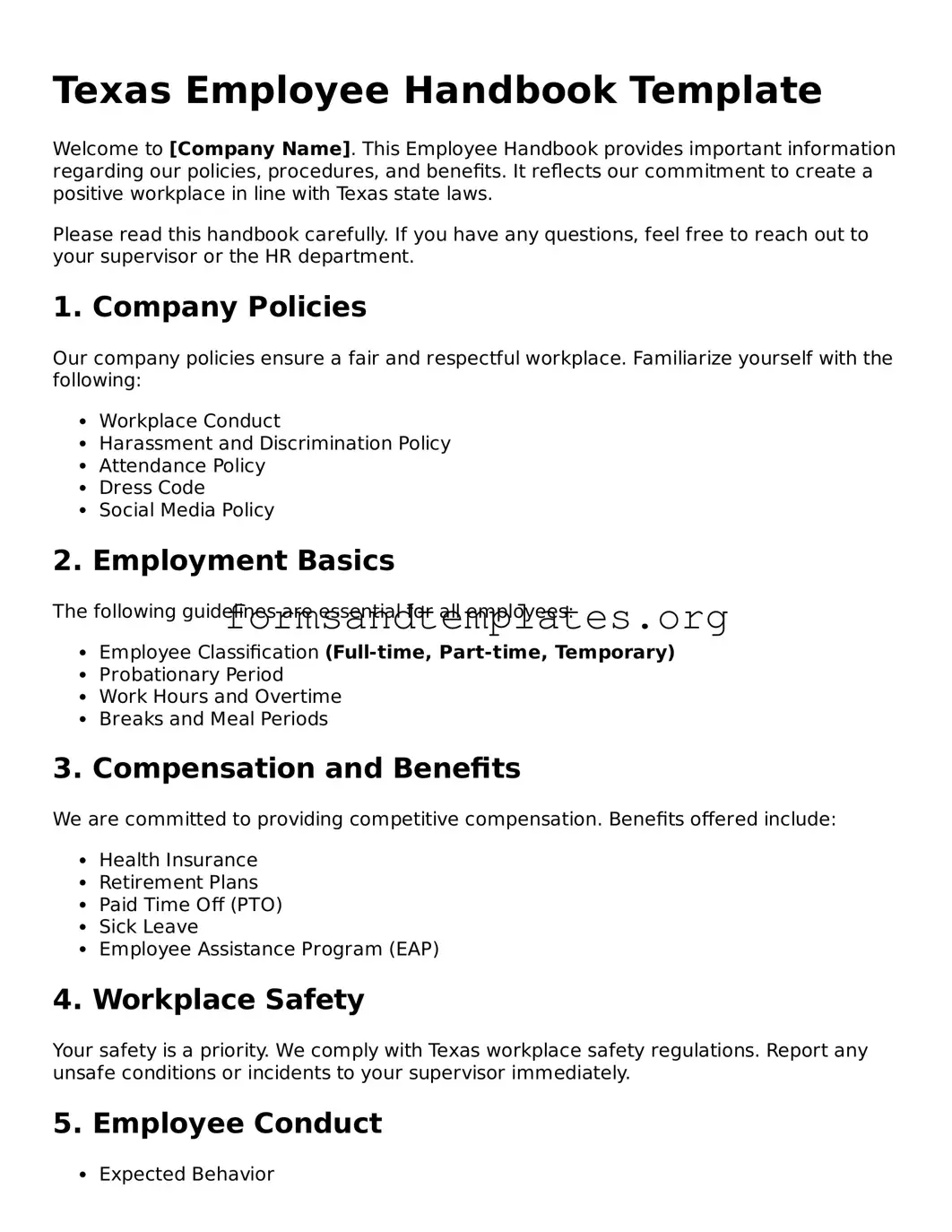Texas Employee Handbook Template
Welcome to [Company Name]. This Employee Handbook provides important information regarding our policies, procedures, and benefits. It reflects our commitment to create a positive workplace in line with Texas state laws.
Please read this handbook carefully. If you have any questions, feel free to reach out to your supervisor or the HR department.
1. Company Policies
Our company policies ensure a fair and respectful workplace. Familiarize yourself with the following:
- Workplace Conduct
- Harassment and Discrimination Policy
- Attendance Policy
- Dress Code
- Social Media Policy
2. Employment Basics
The following guidelines are essential for all employees:
- Employee Classification (Full-time, Part-time, Temporary)
- Probationary Period
- Work Hours and Overtime
- Breaks and Meal Periods
3. Compensation and Benefits
We are committed to providing competitive compensation. Benefits offered include:
- Health Insurance
- Retirement Plans
- Paid Time Off (PTO)
- Sick Leave
- Employee Assistance Program (EAP)
4. Workplace Safety
Your safety is a priority. We comply with Texas workplace safety regulations. Report any unsafe conditions or incidents to your supervisor immediately.
5. Employee Conduct
- Expected Behavior
- Drug-Free Workplace
- Confidentiality Requirements
6. Termination Policies
Understand the grounds for termination and the process involved:
- Voluntary Termination
- Involuntary Termination
- Exit Interviews
7. Acknowledgment
All employees will be required to sign an acknowledgment form confirming they have received and understood this handbook. Please complete the acknowledgment below:
I, [Employee Name], acknowledge that I have received and read the Texas Employee Handbook of [Company Name]. I understand the policies and procedures outlined herein.
Signature: ___________________________
Date: ________________________________
